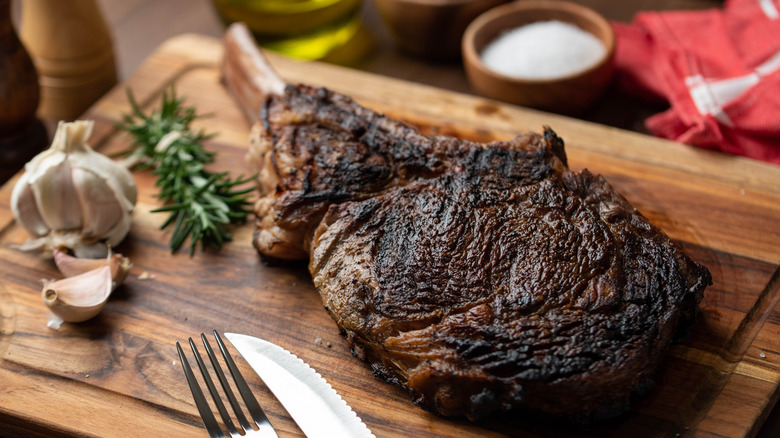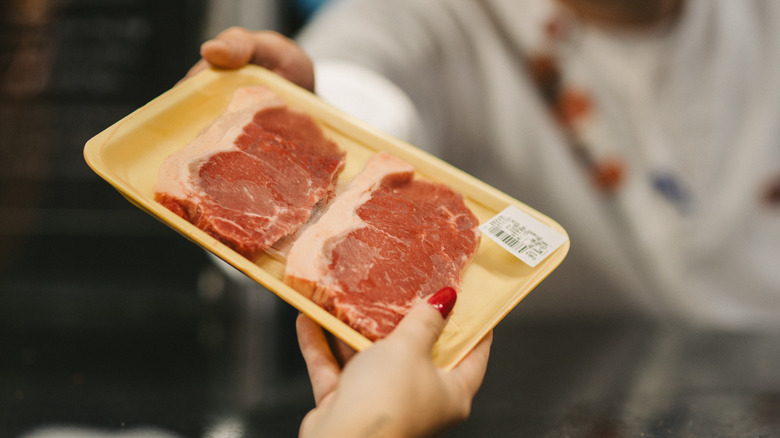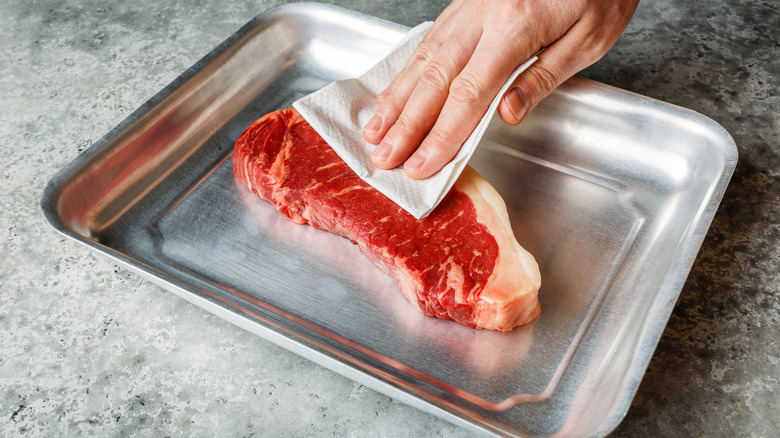Why You Should Be Air Drying Your Steak Every Time
At first glance, the price of a dry-aged steak at a steakhouse seems outrageous, but after one bite, even before that — once you see it — you know it's worth eating cereal for the rest of the week.
Like our skin during the harsh winter, dry-aged beef is exposed to cool air for weeks, dehydrating the meat's surface. Water is pulled from the muscle to the surface where the circulating dry air evaporates it. When those proteins are cooked at high temperatures, the meat's air-dried exterior caramelizes quickly, adding depth and "beefiness" to the flavor.
Since the dry-aging process demands that butchers dedicate space and a lot of time to air-dry the meat, you can expect to pay twice as much for an aged versus a fresh steak at the supermarket or a restaurant. However, steakhouse-caliber results can be achieved at home without taking out a loan.
With some patience, planning, and guidance, you can prepare tender, juicier steaks on your grill or stovetop by air-drying them yourself. The process eliminates overcooked, gray steaks — and allows you to prepare meat to any desired doneness, even a perfect medium-rare, all while guaranteeing a delicious crust.
How to air-dry steak at home
When steaks are brought home from the butcher, they are tightly wrapped in paper or plastic, trapping in moisture. Cooking 'wet' meat steams the protein, turning it an unappealing gray color and preventing the Maillard reaction. Dedicating at least four hours to air-drying the steak in the fridge's cool, dry environment dramatically improves the steak's texture and taste, so plan ahead.
Begin by patting the steak with paper towels to remove excess moisture and generously season it with kosher salt. Since most kitchen refrigerators don't have meat hooks like a butcher shop, place the steak on a wire rack to enable air to circulate freely. If you prepare several steaks, space them apart to prevent the sides from touching.
Place the rack (a baking cooling rack works well) on a rimmed sheet pan to catch drippings, and refrigerate the meat uncovered until the surface is dry. The United States Department of Agriculture recommends cooking raw steaks, chops, or roasts within five days of bringing them home, so work within that timeframe.
Ideally, dedicate a separate fridge to air-drying since the uncovered meat can absorb surrounding odors, and opening the door repeatedly can lead to contamination. If that's impossible, store the steak on the refrigerator's bottom shelf away from ready-to-eat food like produce or leftovers to minimize cross-contamination.
Cooking air-dried steaks and other proteins
Any protein (chicken, turkey, duck, pork, fish, and lamb) can be air-dried to create a crust without fear of overcooking the meat. The protein can be bone-in or boneless, skin-on or skinless, one chop, or an entire roast. Since meat caramelizes quickly after it's been air-dried, any cooking method (grilling, roasting, stovetop) will deliver a golden brown crust.
Air-drying is especially beneficial if the meat has been wet-brined or marinated. Although these techniques can infuse the meat with flavor and make it more tender, the benefits often come at the price of a golden crust. Allowing the meat to air-dry in the fridge for a few hours means having a moist Thanksgiving turkey and crispy skin. Win, win!
This technique is also ideal for hosting, allowing you to do the bulk of the cooking before your guests arrive. Sear the air-dried steaks over high heat earlier in the day, leaving the inside raw. Just before serving, pop the partially cooked meat into the oven and cook the interior to your desired doneness for the perfect steak without making a mess.
Although seasoning the air-drying steaks with salt isn't essential, it will help dehydrate the exterior and flavor the meat. Avoid placing oil on the steak during this stage. It can be added before cooking; otherwise, it will prohibit the steak's moisture from evaporating.



